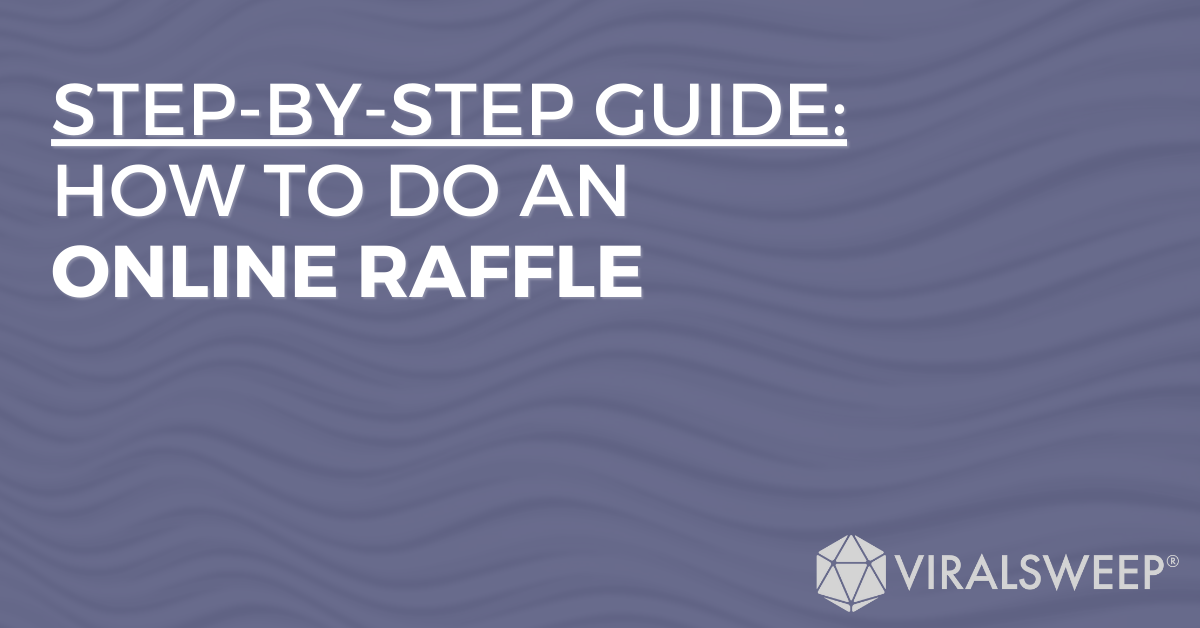Referral marketing is word-of-mouth marketing that uses existing customers to increase new customer acquisitions. It involves encouraging existing customers (and maybe family members) to recommend your product to their contacts.
This can be done through referral bonuses and rewards, customer loyalty programs, referral skills training, and more.
It requires minimal business effort to generate leads and sales because the people referring your business are likely already familiar with it. Customers who refer others to your business become loyal advocates and increase brand awareness.
[Referral Marketing Statistics]
In their 2011 research on the topic, Philipp Schmitt et al. found that “the average value of a referred customer is at least 16% higher than that of a non-referred customer with similar demographics and time of acquisition” – pretty amazing!
In this article, we’ll break down referral marketing, including what it is, its advantages and disadvantages, various referral marketing strategies (that work!), some best practices for doing it effectively, and the benefits of referral marketing campaigns for small businesses.
Let’s get into it.
What is Referral Marketing?
Referral marketing is a kind of word-of-mouth advertising where someone – a current customer or maybe not affiliated with your business yet – goes on to refer someone else.
As we mentioned, referred friends and customers tend to have a higher lifetime value than someone otherwise similar who was not referred. The key to referral marketing is the concept of virality, where each satisfied customer refers to at least one other.
When that condition is satisfied (each person referring more than one new one), we consider the resulting growth exponential – a cost-effective and surprisingly simple way to boost your marketing efforts.
The other key attribute of referral marketing is that the base person (current customer or simply the person doing the referral) is incentivized to make referrals by rewards and other benefits.
That makes it a win-win scenario for both the business and the referrer. Take it from Forbes, which reports that “marketers rate referrals as the 2nd-highest source of quality leads.”
Some of the key differences between referral marketing and other types of digital marketing include the following:
- Referral marketing requires less effort than other digital marketing techniques, with most of the legwork done by existing customers.
- It’s more cost-effective than email marketing or search engine optimization (SEO) strategies.
- It has a higher ROI than other digital marketing techniques because the customer is pre-qualified and likely interested in your offering.
- You can use existing contacts to refer others and grow your customer base quickly.
- Referral marketing relies on trust and relationships from brand advocates, which makes it more reliable than other digital marketing strategies.
Types of Referral
In this section, we’ll discuss the various different types of referrals it’s possible to deploy into your marketing efforts.
Customer Referral Programs
Customer referral programs reward existing customers for referring their friends and family to your business. The rewards can be anything from discounts or points to a free product or service.
Pros of customer referral programs include increased customer loyalty and brand awareness. Cons are that it’s difficult to track referrals, and there may not be enough incentive for people to make referrals in the first place.
Joint Marketing Campaigns
Joint marketing campaigns involve partnering up with a company or other business in the same industry. You leverage each other’s customer bases and create referral incentives for both parties.
Pros include increased visibility and access to a larger customer base. Cons are that you have limited control over the campaign: you’re sort of at the mercy of the partner’s marketing techniques and target audience demographics.
Social Media Referral Programs
Social media referral programs reward customers for sharing your content on their social profiles. These types of referrals rely heavily on the virality of posts and can be a great way to get more exposure.


Pros include increased reach and visibility, access to potential new customers, and the incredible potential upside of virality that we mentioned before.
Cons are that it’s hard to track results – it always is with awareness because you never truly know who has seen and logged your brand.
Affiliate Program
Affiliate programs offer commissions to affiliates who refer customers your way. The commission is determined by you and paid out when a referred customer makes an actual purchase. This is common among YouTubers and bloggers.
Pros include access to a larger (and niche) customer base, increased brand awareness, and passive income. The con is that you’re essentially paying out commissions on each purchase.
Employee Referrals
Employee referrals are when you incentivize your existing employees to refer friends and family to join your organization.
It’s great for filling positions that can’t be filled through the typical hiring process. I once worked at a company that offered a $1,000 referral reward if you referred someone who was hired.
Pros include access to qualified talent, increased employee engagement, and better retention rates than other recruitment methods.
Cons are that it’s hard to track the performance of these candidates, and there may not be a constant supply of talent.
Cashback and Discount Offers
Here’s how cashback and discount offers work: A customer will get a certain percentage or amount of money back for making purchases and referring friends. This type of referral typically appeals to those looking to save money but may not be as effective in other markets.


Pros include more opportunities for repeat business, and it’s easier to track referrals than with some alternatives.
Cons are that customers may not be as enticed to make referrals if the rewards aren’t sufficiently large enough, and cashback offers can cut into your profits.
Why Referral Marketing Works
Let’s take a quick look at some statistics that indicate the power of referral marketing. For each, we’ll get into what exactly the metric means for a small business or ecommerce company employing referral marketing techniques.
Annex Cloud reports the numbers that follow in this article.
- Referral Marketing generates 3–5x higher conversion rates than any other channel. Conversion rate is a key marketing metric that asks: of a group of people that are exposed to some marketing collateral of yours, what proportion take the action you intended them to take, e.g. filled out a form, watched a video, etc.
- Referred customers bring you a 25% higher profit margin. Everyone understands profit. But the fact that it’s so much higher for a referred customer is likely because the quality of that customer is higher as a result of them being preferred. Perhaps they are more trusting because they became aware of your business through someone they trust, or the referral was a happy customer.
- Referred customers are four times more likely to refer more customers to your brand. This is perhaps the most important statistic of the three here because it reinforces what we said earlier about virality. If your typical, non-referred customer brings 0.5 people to the business on average, for example, this statistic indicates that a referred customer in the same situation would likely bring two people to the business (0.5 x 4 = 2)!
Advantages and Disadvantages Of Referral Marketing To Consider
Of course, you should never dive into a new technique or area without considering the pros and cons. Let’s take a look at both.
Advantages of Referral Marketing
- Increased trust and credibility. Referred customers are more likely to trust your brand because they’ve heard positive things from a trusted source.
- Lower cost per acquisition. Referred customers require less effort to acquire than those found through other methods, making them cheaper overall.
- Better quality leads. Referred customers often have higher conversion rates as they are more likely to be invested in the customer experience.
- Increased customer loyalty. Referred customers have already been pre-sold on your brand, making them more likely to stick around for the long haul (improving customer retention) and become loyal customers.
- Viral potential. If your referral program has an attractive incentive, referred customers can create a viral effect by bringing more customers to the business.
Disadvantages of Referral Marketing
- Lack of control. You can’t control who is referring customers to you and what they say about your brand.
- Difficulty measuring success. It can be hard to track referrals and measure success, as not all referrals may result in conversions.
- Dependence on customers. Your referral program may not be successful if your customers aren’t willing to refer other people.
- Potential for negative referrals. While referral programs can be great for your business, they can also negatively impact you if the wrong people refer customers. Another risk here is a subpar customer experience.
- Limited reach. Your referral program is limited to the reach of your customers, as they are the ones that will be referring people.
3 Solid Referral Marketing Strategies That Work
There are several ways you could execute your referral program. This section will examine three strategies to help you get the most out of your referral program.
Offer Incentives
A fundamental principle of economics is that people respond to incentives. It’s the most reliable way to influence behavior.
People are more likely to refer your business if a reward is involved. Here are a few ideas for what incentives might look like:
- Cash or gift card rewards – you can offer a flat amount for each successful referral or a percentage of the amount spent by the new sign-up.
- Special discounts or bonuses – you could offer referred customers special discounts as an incentive to refer more people.
- Free product samples – particularly useful if you have physical products that could be sent out.
Three examples. First, remember in Uber’s early days, how you would get a free ride or ride credit in return for referring someone. That was what drove Uber to its massive current size. People just wanted to get a free ride for themselves!


Second, Tesla has a successful referral program. Its principle is that a Tesla owner who brings in someone new to the Tesla customer community receives a discount on their next purchase, and so does the person they refer.
Finally, Dropbox, whose super simple referral strategy of offering free extra cloud storage in exchange for referrals, saw them amass millions of customers and become a cloud behemoth.
Incentives, people.
Leverage Social Media
We use leverage in the true sense of the term here: social media is a lever you can use to multiply marketing effectiveness.
Again, that’s because of the potential viral effects it offers. Use social media platforms like Facebook, Instagram, Twitter, and LinkedIn to spread the word about your referral program and reach new people.
You could consider building dedicated landing pages for each platform to convert the referred lead into a customer and building templates for these so they’re easy to repeat and do split testing with.
Use a Rewards Program
What better way to ensure participation and keep track of things than by deploying a tool specifically for your referrals program? Some of the most successful referral programs worldwide have succeeded because they use user-friendly, robust, and engaging software.
Let’s consider a case study. Vitality, a rewards program operated by Discovery Health (the largest private medical aid provider in South Africa), provides members with a dedicated Vitality app.
Through it, members monitor their progress toward goals in fitness, health, responsible spending, and good insurance decisions, and amass points which can be redeemed for cash, flights, vouchers, discounts, and more.
Vitality has over 1 million monthly active members. Discovery enjoys the healthiest base of users among medical aid providers in the country and the lowest volume of claims payouts as a result.
Best Practices for Implementing Referral Marketing Programs
There’s no need to reinvent the wheel and work out how to do referral marketing independently from scratch. Rather, learn from the experience of others and start with these best practices for your own foray into the area.
These best practices include setting clear goals and metrics, personalizing the referral requests you send, simplifying the referral process, offering various referral options, and providing customer support throughout.
Set Clear Goals and Metrics
How will success be measured? What are the criteria for successful referrals? Answer these questions before setting up any incentive plan.
Some examples of metrics include the total number of referrals, cost per acquisition (CPA), customer lifetime value (CLV), and conversion rate.
Personalize Referral Requests
Personalize messages using referral codes, the recipient’s name, or data from previous interactions. This will show the recipient that you have taken the time to craft a tailored message.
Make the Referral Process Simple and Easy
Provide users with an easy-to-use referral link and incentive that they can share with their contacts in a few clicks. Some areas you might focus on making simpler include registration, sharing, tracking, and claiming rewards.
Offer a Variety of Referral Options
To ensure you reach as many potential customers as possible, offer multiple referral methods. Social media is a great place to start, and you can also include email, text message marketing, paid ads, newsletters, in-app notifications, and so on.
Provide Ongoing Support and Communication
Explain all steps clearly, and offer assistance to ensure everything runs smoothly. Set up a communication plan to inform users of any changes or updates and answer any questions they may have.
Top 3 Benefits of Referral Marketing For Small Businesses
Referral marketing can be especially beneficial for small businesses with limited cash and high growth demands. Here are three of the primary benefits of small business referral marketing.
- Increased customer acquisition. Referral programs are a pretty reliable way to grow your customer base, and they often come at a fraction of the cost of traditional marketing methods.
- Improved customer loyalty. We saw earlier how referred customers tend to be more loyal and spend more during their lifetime than the average customer.
- Higher conversion rates. Since customers are more likely to trust recommendations from people they know (the existing customers), referrals tend to get more clicks and actions than typical marketing channels get on average. That’s great bang for your buck – and your buck is already pretty low with referral marketing anyway!
Start a Referral Program With ViralSweep Today
In this article, we learned a whole whack about referral marketing, including its different types, advantages and disadvantages, a few proven referral strategies, and a number of best practices for when you finally start.
It’s obvious now that referral marketing is a technique you need to add to your marketing plan. It’s cost-effective, sees high conversion rates, benefits from virality, and results in more loyal customers. What’s not to love?
ViralSweep is a referral marketing software that’ll prove crucial for your success. The purpose-built apps for giveaways, contests, sweepstakes, and ecommerce purchases are some of the best referral tools.
They will enable you to add an aspect of referral marketing to all facets of your digital marketing presence. For example, collect leads while at the same time encouraging those leads to refer others for their own benefit, and other similar types of automation.
Learn more about ViralSweep here.





















